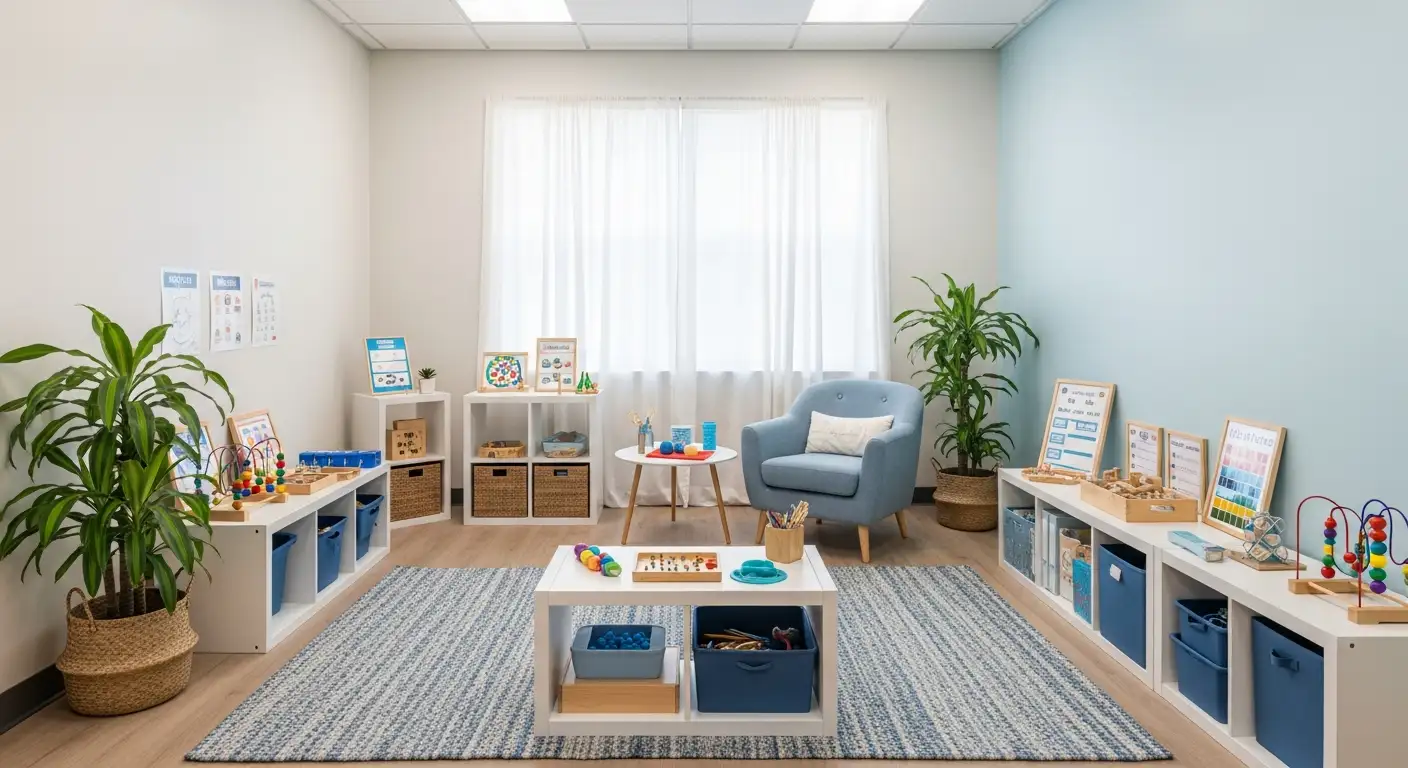
Understanding ABA Measurement
Importance of Data Collection
In Applied Behavior Analysis (ABA), data collection is essential for understanding and assessing behavior changes. Accurate and systematic measurement provides valuable insights that help professionals evaluate the effectiveness of interventions. Effective data collection allows practitioners to make informed decisions tailored to the unique needs of each individual receiving therapy.
Data collection methods are categorized into two primary types: continuous measurement and discontinuous measurement. Each technique serves specific purposes and yields different insights into the behavior being tracked. Continuous measurement involves monitoring every instance of a behavior throughout the specified observation period, ensuring that no occurrences are overlooked. This thorough approach is beneficial for gathering a complete and accurate picture of behavior dynamics over time.
Role of Measurement in ABA
Measurement plays a pivotal role in ABA methodology by establishing a framework for tracking behavior patterns and outcomes. ABA professionals use various metrics to assess performance, which aids in developing effective intervention strategies. The most common metrics include frequency and duration.
MetricDescriptionFrequencyThe count of how often a targeted behavior occurs. It is crucial for understanding the behavior’s intensity. Tools such as tally marks or counting apps can be used. (Psych Central)DurationThe measurement of how long a behavior lasts during each occurrence. Practitioners utilize timing devices to record these lengths, providing valuable data for evaluating behavior (Psych Central).
By utilizing consistent measurement methods, ABA practitioners can effectively assess how interventions impact behavior over time. This process is instrumental in making data-driven decisions regarding treatment modifications and ongoing support. For a comprehensive understanding of specific ABA techniques, such as task analysis or negative reinforcement, consider exploring additional resources that delve deeper into these strategies.

Continuous Measurement in ABA
Continuous measurement in Applied Behavior Analysis (ABA) involves recording every occurrence of a behavior within a specified period, allowing for a detailed understanding of the behavior and its patterns. This method is particularly useful for tracking behaviors that are brief, rapid, or occur in quick succession (Bridge Care ABA).
Detailed Analysis and Benefits
The major benefit of continuous measurement is its high level of precision and detail in data collection. Unlike discontinuous measurement, which provides a more generalized view by sampling behavior at specific intervals, continuous measurement captures every instance of the behavior. This comprehensive approach offers a deeper understanding of behavior patterns, characteristics, and variations.
Continuous data is advantageous for several reasons:
The efficiency and effectiveness of continuous measurement make it an essential tool in ABA therapy.
Types of Continuous Measurement
Continuous measurement encompasses various types that each capture different aspects of behavior. The most common forms include:
Type of Continuous MeasurementDescriptionFrequencyMeasures how often a specific behavior occurs, providing insights into behavior occurrence. It is graphed by plotting frequency on the y-axis and date on the x-axis. (ArtemisABA)DurationMeasures the total time a behavior occurs, helping to assess the length of engagement in a particular behavior.RateCombines frequency and time, providing a measure of how often behavior occurs in a specified time frame.LatencyMeasures the time between the presentation of a discriminative stimulus and the initiation of a response.Inter-response TimeMeasures the time between two consecutive instances of a behavior, offering insight into the pacing of responses.
Each type serves a unique purpose in measuring behavior, allowing for thorough evaluations critical to effective interventions in ABA therapy. Understanding these measurement types is vital for practitioners to implement appropriate strategies effectively. For more strategies related to behavior management, explore our links on behavior contract aba and task analysis aba therapy.
Discontinuous Measurement Techniques
Overview of Discontinuous Measurement
Discontinuous measurement, often referred to as interval recording, involves observing and documenting behavior at specific time intervals. This method offers a more efficient and manageable approach to data collection compared to continuous measurement. It allows practitioners to capture behavioral data in a structured manner, which can be particularly useful for behaviors that occur frequently or are challenging to monitor continuously (Gold Star Rehab).
Discontinuous measurement techniques can simplify the data collection process while still providing valuable insights into behavior patterns and occurrences. This is particularly advantageous for practitioners working with limited resources or time constraints.
Common Methods in ABA
In the realm of Applied Behavior Analysis (ABA), several common methods of discontinuous measurement are employed. These methods help to provide structured guidelines for observing and recording behavior during designated intervals. The most widely used techniques include:
MethodDescriptionPartial Interval RecordingInvolves recording whether the behavior occurred at any point during the interval.Whole Interval RecordingRequires the behavior to be observed and recorded as occurring continuously throughout the entire interval.Momentary Time SamplingObserves and records behavior at specific moments, such as every few minutes.
Each of these methods serves a distinct purpose and offers different advantages. For example, partial interval recording may be beneficial for higher-frequency behaviors as it records any instance of occurrence, while whole interval recording is more suited for behaviors expected to occur for longer durations. Lastly, momentary time sampling provides a snapshot of behavior, making it easier to monitor for certain types of behaviors over time.
Choosing the appropriate method involves considering the nature of the behavior, the resources available, and the desired insights into the behavior being measured. This balance between continuous and discontinuous data collection is fundamental for effective behavior analysis and intervention planning, as it helps ensure accurate and meaningful outcomes for both practitioners and clients.
Choosing Between Continuous and Discontinuous
Selecting the appropriate measurement method in ABA therapy is essential for accurate data collection and effective intervention. This decision hinges on several factors and practical considerations.
Factors Influencing Selection
Several factors influence whether continuous or discontinuous measurement techniques are most suitable for a given behavior:
Practical Considerations
When choosing between continuous and discontinuous measurement methods, the following practical considerations should be taken into account:
ConsiderationContinuous MeasurementDiscontinuous MeasurementTime CommitmentRequires consistent and dedicated observationMore manageable; allows for sampling at intervalsDetail of DataHigh level of precision and comprehensive dataGeneralized view with limited samplingResource IntensityMore time-consuming and possibly expensiveLess resource-intensive, easier to implementContext SuitabilityIdeal for frequent and duration-critical behaviorsSuitable for behaviors not feasible for continuous observation
Practitioners must assess these factors to make informed decisions that enhance data collection and subsequent intervention planning. By considering the specific needs and goals of the individuals receiving ABA services, professionals can select the most effective measurement methods (Brighter Strides ABA).
Learning about the key differences between continuous and discontinuous measurement techniques is vital for effective ABA practice. This understanding helps to foster accurate data collection and analysis, which are crucial for the success of interventions. For further reading on related topics, explore resources like applied behavior analysis books to read.
Data Collection Methods in ABA
Data collection methods are vital in ABA therapy for analyzing behaviors and measuring the effectiveness of interventions. This section discusses two key methods: frequency measurement and rate and duration measurements.
Frequency Measurement
Frequency measurement refers to counting how often a specific behavior occurs during a given observation period. This method is crucial in understanding behavior patterns, such as how often a child raises their hand in class or engages in other target behaviors. Frequency data helps quantify both desirable and undesirable behaviors, providing valuable insights into behavior analysis (Artemis ABA).
When collecting frequency data, it is essential to graph the results to visualize trends over time. The data can be displayed with frequency on the y-axis and the date on the x-axis, allowing for easy analysis of how behavior changes across sessions.
BehaviorInstances ObservedSession DateHand Raising1501/01/2023Interrupting501/01/2023Task Completion1001/01/2023
Frequency data collection is a straightforward counting method, but it does not account for variations in session duration. Understanding this limitation is crucial for accurately interpreting the data (Master ABA).
Rate and Duration Measurements
Rate measurement is similar to frequency measurement but further refines the data by assessing how often a behavior occurs within a specific time interval. This method helps track changes in behavior rates over time, providing essential insights for behavior analysis.
Duration measurement focuses on how long a behavior lasts from beginning to end. This approach can be particularly useful for behaviors where the duration is a critical factor, such as the length of time a child maintains focus on a task. Both rate and duration data offer specific insights into behavioral change.
Measurement TypeDescriptionRate MeasurementFrequency of behavior per minute (e.g., 5 hand raises per minute)Duration MeasurementTotal time engaged in the behavior (e.g., 10 minutes of on-task behavior)
Together, frequency, rate, and duration measurements provide a comprehensive understanding of behavior in ABA therapy. These methods, along with other data collection techniques, can enhance the effectiveness of interventions and guide treatment planning.
For more advanced concepts in ABA, consider learning about task analysis and matching law.
Practical Application of Measurement
Implementing Continuous and Discontinuous Methods
The choice between continuous and discontinuous measurement methods in ABA (Applied Behavior Analysis) can significantly impact the effectiveness of interventions. Continuous measurement is recommended for behaviors that occur frequently or when precise duration is crucial, allowing for a detailed analysis of each instance. For instance, tracking a child’s on-task behavior during classroom activities requires continuous monitoring to gather accurate data.
On the other hand, discontinuous measurement methods, such as partial interval, whole interval, and momentary time sampling, are utilized when continuous measurement is impractical or unnecessary.
Discontinuous MethodDescriptionPartial IntervalRecords whether a behavior occurred at least once during each interval.Whole IntervalRequires the behavior to occur throughout the entire observation interval.Momentary Time SamplingSamples behavior at specific moments within the observation period.
These methods offer a more practical approach in scenarios where continuous observation is resource-intensive or time-consuming (Brighter Strides ABA).
Insights for Effective Intervention
Effective interventions in ABA are highly dependent on the measurement methods chosen. Practitioners should consider several factors when making their selection. The nature of the behavior being observed, resource availability, and the validity and reliability of measurement techniques are crucial. Continuous measurement may require consistent, dedicated observation or technological systems, which can be more resource-intensive. Conversely, discontinuous measurement can be accomplished within predetermined time frames, making it easier to manage in settings such as classrooms or clinics (Bridge Care ABA).
Studies suggest a balanced approach may yield positive outcomes. Although electronic data collection has increased the feasibility of continuous measures, practitioners often still rely on discontinuous methods for many interventions. This highlights the need for flexibility in choosing the most appropriate strategy for accurate and meaningful data collection, ensuring interventions are tailored effectively. Furthermore, practitioners may find it beneficial to consult resources such as applied behavior analysis books to read to deepen their understanding of measurement techniques and their applications.
The interplay of measurement methods influences the overall success of ABA therapy, shaping how behavior data informs intervention strategies. By selecting the appropriate approach, practitioners can enhance the effectiveness of their interventions and improve client outcomes.









